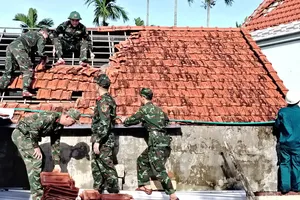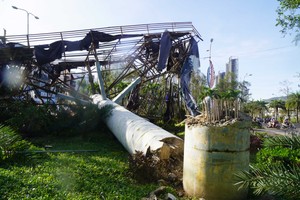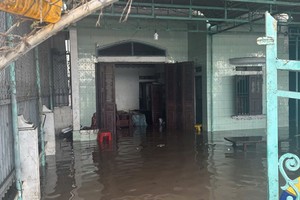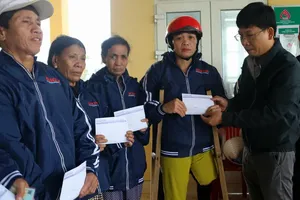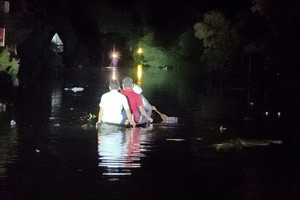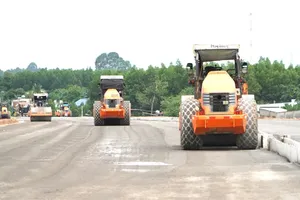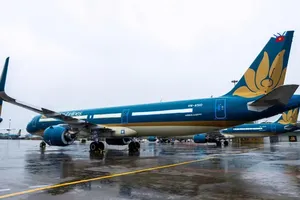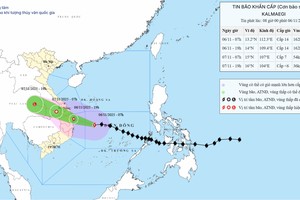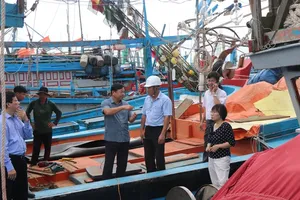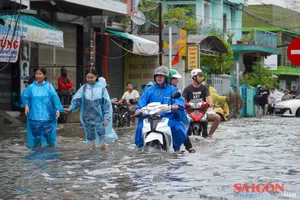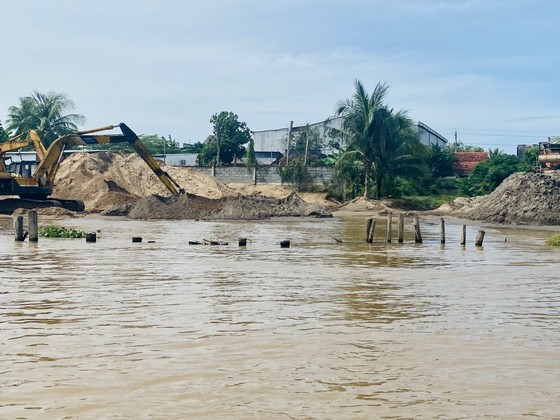 |
A sand exploitation site along Hau River in An Giang Province suffers from serious landslide. |
Owing to severe landslides, many areas in the Mekong Delta are seriously reviewing river sand mining. For instance, Vinh Long Province has just proposed to halt sand exploitation in the part from My Thuan Bridge to Dinh Khao Ferry Station to reevaluate the situation because a topographic study on Co Chien River (a branch of Tien River) at the end of last year revealed erosion holes and creeks with a depth of 28-38m.
As to a suggestion of mining sea sand for construction purposes, Nguyen Huu Thien – a freelance researcher on ecosystems in the Mekong Delta – and Dr. Duong Van Ni from Can Tho University both agreed that it is not a wise decision since this sand volume is the factor to create the delta region.
Sharing a similarly cautious view is National Director Ha Huy Anh of the Project about Sustainable Sand Management in the Mekong Delta (by World Wide Fund for Nature – Vietnam). He warned that careful consideration is needed before making a decision to exploit sea sand, especially in offshore areas. Since the sand volume poured into estuaries is limited and reduces from time to time, this activity might allow high waves to hit the coast, which is extremely dangerous.
Nevertheless, stopping sand exploitation is not wise either as this material is a necessity for the building of expressways, highways, and land leveling for residential, industrial projects.
Dr. Ni proposed mining sand dune, the ideal one in such an urgent time, for expressway projects in the Mekong Delta. The sand here has been accumulated for a long time, and can now be used for construction purposes. The drawback is a resettlement plan for residents currently living there. It can be done via propaganda activities so that those inhabitants are aware of the danger of living on sand dunes and near riverbanks.
Obviously, talking sand from the sea or dunes each has its own strengths and weaknesses, asking for careful consideration in order to minimize damages to the Western Delta.
Right now, it is critical to use data to locate available sand banks as well as areas with landslide-warning signs in the Mekong Delta.
Contractors of sub-projects in the North-South Expressway project said that there is a need for 18.5 million cubic meters of sand in the next two years, but the supply in the Mekong Delta cannot satisfy it. It is, therefore, essential to give priority to the progress of Can Tho – Hau Giang Expressway and Hau Giang – Ca Mau Expressway sub-projects.
In a working session with the above contractors, An Giang Province informed that the sand volume of the province and other neighboring areas is seeing a drop due to low accretion of upstream sand. A recent survey from WWF-Vietnam shows that only a small sand amount is coming to Tien River, while Hau River mainly receives mud.
The province is going to collaborate with the Natural Resources and Environment Ministry to investigate all existing and possible sand mines for the critical expressway project on the principle of maintaining the project progress at all costs. After this investigation, An Giang Province will greenlight Can Tho City and Hau Giang Province to exploit sand in two mines.
The Southern Institute of Water Resources Research reported that there are now over 620 landslide locations on a total length of 610km in the Mekong Delta. Among them are 127 extremely dangerous ones with a total length of 127km. they require both short-term and long-term solutions to maintain the shape of river routes there.

